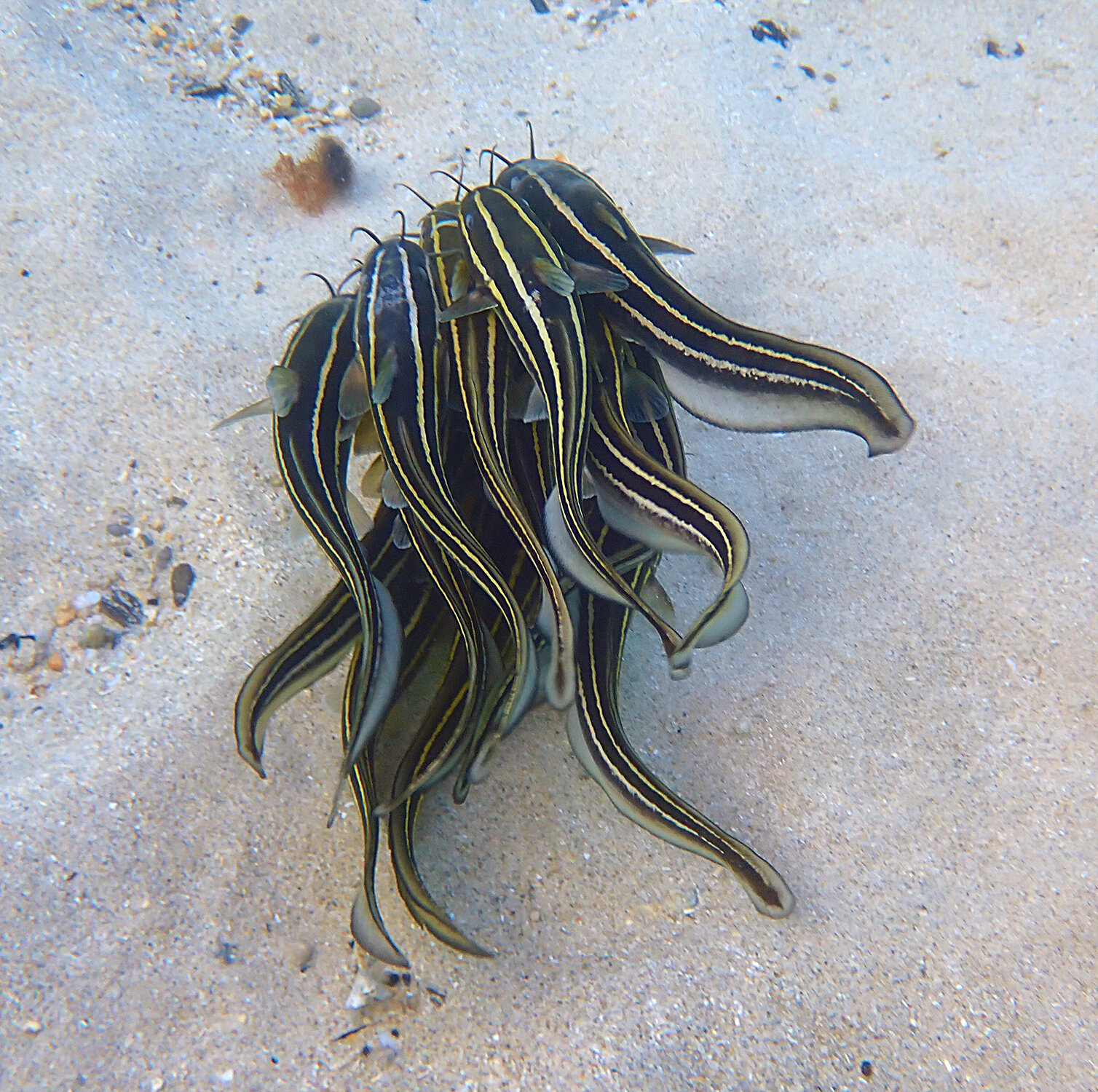It’s 7 am, overcast, high tide and, for the second day in a row, blowing a stiff gale from the south west straight into the perfectly curved arena of Emily Bay – the kind of conditions that make for a more strenuous than normal swim. Usually benign and calm, the lagoon seethes, the wind pushing rogue waves up to the limit of the beach area. I take off my glasses and leave them on my towel safe, so I think, at the top of the beach. A gust picks them up, sending them scudding away. Then a wave nips the edge of my towel. I tuck them out of the way behind the timber retaining wall where I hope they will be fine until I get back.
Still, the water is refreshing and certainly not too cold. I swim with a mask and snorkel – so much easier than goggles – my days of competition swimming and streamlining my profile have long gone!
I know every bombie, every coral and weed formation, and who lives where – many of the fish are very territorial and you will see the same guys in the same spot day after day. Some roam further, like the ball of juvenile striped eel catfish, Plotosus lineatus, that ebb and flow in a sinuous, gyrating bundle with the tide and surge in the sandy reaches of either Emily or Slaughter Bays.
Striped eel catfish, plotosus lineatus
This particular morning, I noticed a few bluebottles (Physalia utriculus or little womb bladder), not many, blown up on the beach. These guys can sting, even after being stranded on a beach for a few days. I’ve often swum when they have been about, although I admit I keep a wary lookout.
But what I saw in the water this day was new to me. On the seabed in one small, defined area were probably more than 100 beautiful purple snail shells. I’d seen the odd one or two before being gently tossed back and forth by the surge, but never this number at one time and in one place. Many seemed to be oozing a clear mucous from their black velvety bodies. Mistakenly, I thought I’d intruded on a mating spree. After my swim, I picked up three empty shells that had blown up on the beach and took them home to investigate.
They are known as the common violet snail, Janthina janthina, but to me they seemed anything but common – like fragile jewels on the sandy bed. Why is it that so often when something is described as ‘common’ we take it for granted? In ones or twos they’d never aroused my interest, but now I wanted to know more. Just like a garden snail in shape, size and form, they were like little amethyst-coloured whorls of perfection dotted across the seabed.
It seems these molluscs are part of the Blue Fleet, a term coined by ocean biologist Sir Alister Hardy in 1956. This was the name he gave to the group of creatures that make a living as nomads sailing in the world’s tropical and subtropical seas in the thin layer just beneath the surface, in what is known as the pleustal zone. And surprisingly many of them are blue. Bluebottles are another member of this elite fleet.
The violet snail creates its own raft from mucous exuded from its foot, within which it captures air bubbles. The mucous then hardens. This really is its life raft, because if it ever breaks the snail sinks. Which is where I found them in Emily Bay. At the bottom, dying.
As they wander the oceans, the violet snails are camouflaged by what is known as ‘counter shading’. They hang upside-down beneath their rafts with the darker-coloured parts of their shell exposed to the surface. The paler colours are beneath. Predators above can’t see them as they merge with the surrounding water, nor can those from beneath as they assume the colour of the sky above. Clever!
When I swam again the next day, many of these fragile shells had already begun to break up. I’d been lucky to see so many of these ‘common’ sea snails at once. I’ll be sure to look out for them next time the wind and currents conspire to blow them into Norfolk Island’s Emily Bay.
I found much of the information for this article in an excellent paper by Simon Grove in The Tasmanian Naturalist. I can recommend it for anyone wanting to know more about these amazing creatures of the pleustal zone.
Common violet sea snail and its mucous raft.



